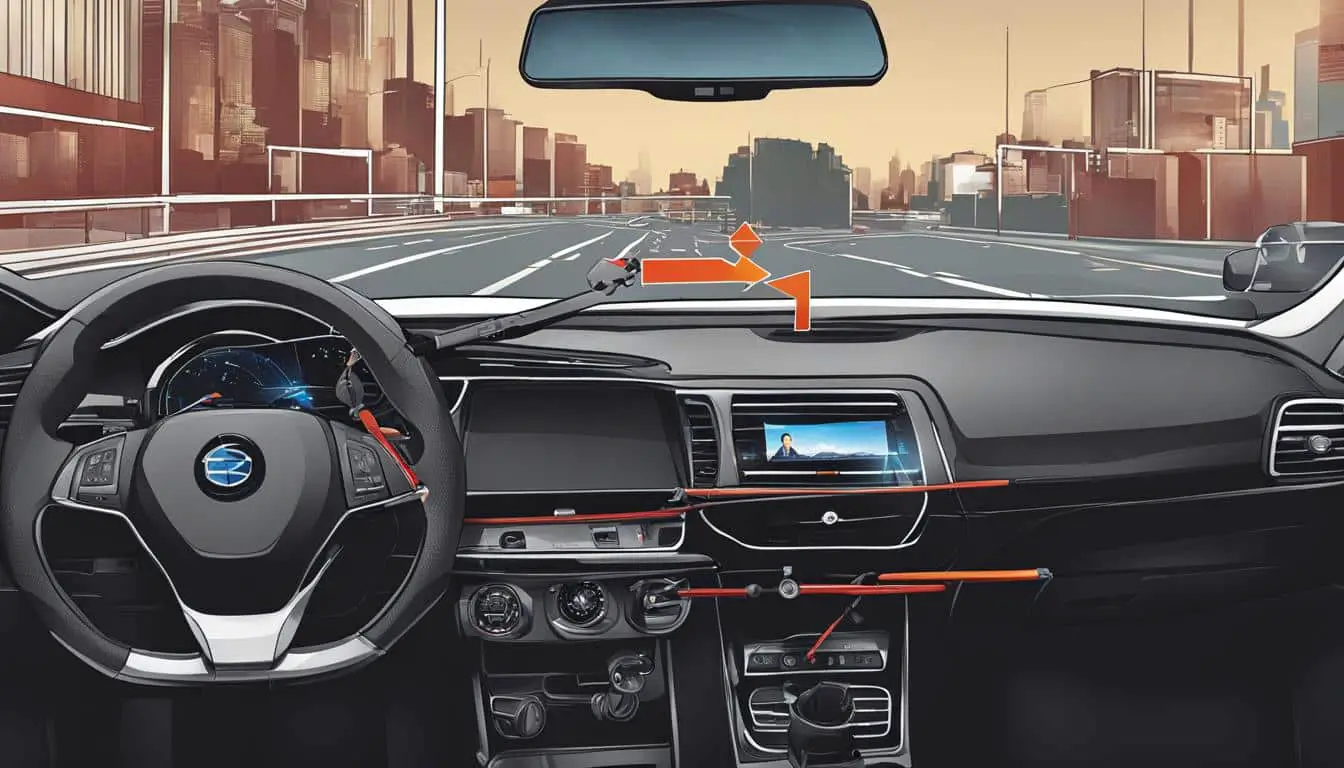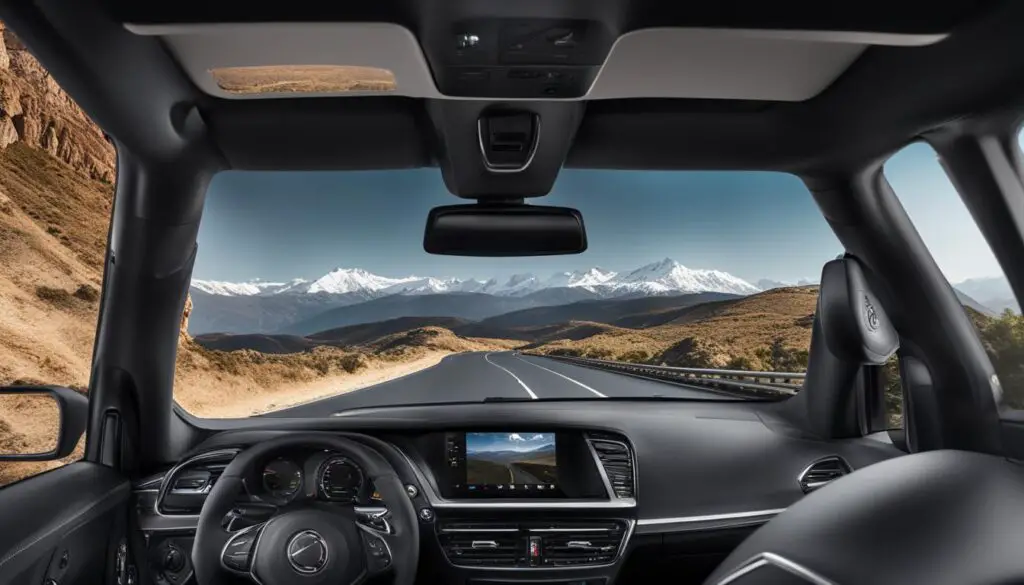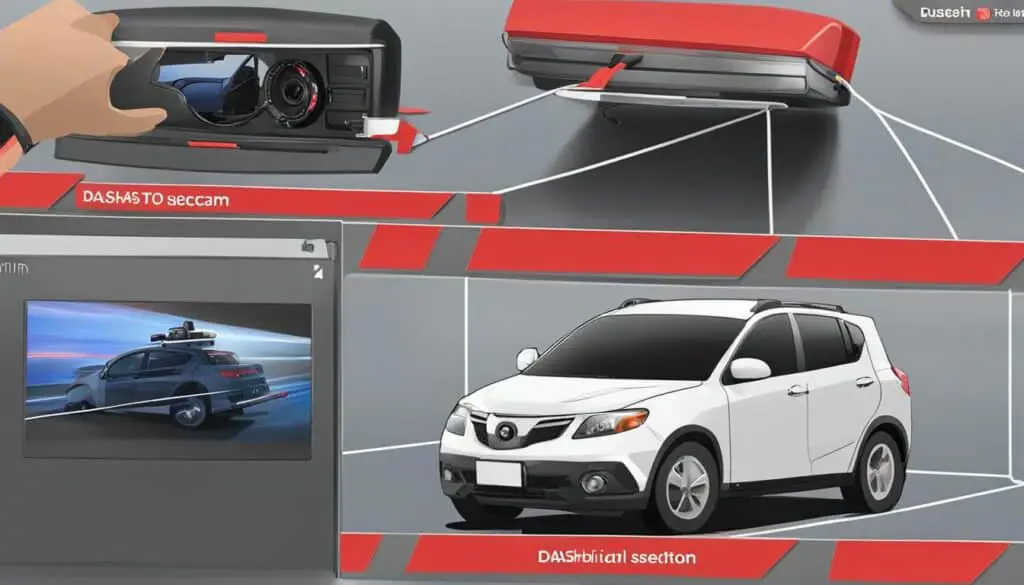
Guide to Choosing and Installing a Dashcam
As a professional copywriting journalist, I know the importance of safety on the road. One way to ensure your safety while driving is by installing a dashcam in your car. Not only does it provide evidence in case of an accident, but it can also deter potential thieves and offer peace of mind while driving. However, with so many options available in the market, choosing the perfect dashcam for your car can be overwhelming. That’s why in this section, I will provide a comprehensive guide to help you choose and install the ideal dashcam for your needs.
To make the selection process easier, we will discuss key features to consider when buying a dashcam and review some of the best dashcams available today. Additionally, we will provide a step-by-step guide to help you install your dashcam with ease and confidence, whether you are a DIY enthusiast or a beginner. By the end of this section, you will be well-equipped to choose and install a dashcam for your car.
Key Takeaways:
- To choose the best dashcam for your car, consider important features such as video quality, recording time, parking mode, and connectivity options.
- It is important to select a dashcam with a wide viewing angle to capture footage of all potential incidents on the road.
- When installing your dashcam, position it in a location that provides an unobstructed view and easy access to the controls.
- Consider using a hardwiring kit to ensure a neat and professional installation that does not obstruct your view or interfere with the airbags.
- Test your dashcam after installation to ensure it is functioning correctly and make any necessary adjustments.
Factors to Consider When Choosing a Dashcam
When choosing a dashcam, it’s important to consider a variety of factors to ensure that you select the best one for your needs. Here are some key features to keep in mind:
Dashcam Features
The features of a dashcam can greatly impact its performance and usability. Some important features to consider include:
- Video Resolution: A dashcam with a high video resolution will capture clearer footage.
- Field of View: A wider field of view will capture more of the surrounding area.
- Night Vision: A dashcam with night vision capabilities will capture clearer footage in low-light conditions.
- Parking Mode: This feature will allow your dashcam to monitor your car while it’s parked, capturing footage in case of a hit-and-run or other incidents.
- GPS: A dashcam with GPS can track your location and speed, providing valuable data in case of an accident.
Dashcam Reviews
Reading dashcam reviews can be a useful way to gather information about different models. Look for reviews from reputable sources, such as tech publications or consumer review websites. Pay attention to both the pros and cons of each model, and consider how well it aligns with your needs.
Here are some of the top-rated dashcams according to customer reviews and expert opinions:
| Dashcam | Resolution | Field of View | Night Vision | Parking Mode | GPS |
|---|---|---|---|---|---|
| Garmin Dash Cam 66W | 1440p | 180 degrees | Yes | Yes | Yes |
| Nextbase 622GW | 4K | 140 degrees | Yes | Yes | Yes |
| Vantrue N2 Pro | 1080p | 170 degrees | Yes | Yes | No |
Best Dashcam for Car
Choosing the best dashcam for your car depends on your individual needs and preferences. Consider the features that are most important to you, as well as your budget. It’s also important to choose a reputable brand that offers quality products and good customer support.

Overall, taking the time to research and choose the right dashcam for your car can provide valuable peace of mind and protection on the road.
Step-by-Step Guide to Installing a Dashcam
Installing a dashcam in your car may seem like a daunting task, but with the right tools and instructions, it can be a straightforward process. In this section, I will guide you through the step-by-step process of installing a dashcam, from preparation to final testing.
Step 1: Prepare for Installation
The first step in installing your dashcam is to prepare your car and dashcam. Make sure you have all the necessary tools, including a screwdriver, pry tool, and adhesive tape. Then, select a suitable location for your dashcam. You want it to be mounted securely and discreetly, without blocking your view or the airbags.
Step 2: Connect the Power Supply
The next step is to connect the dashcam’s power supply. Most dashcams are powered by plugging them into the cigarette lighter socket or hardwiring them to your car’s battery. If you choose to hardwire your dashcam, ensure that you follow the manufacturer’s instructions carefully to avoid any damage to your car’s electrical system.
Step 3: Mount the Dashcam
Once you have connected the power supply, you can proceed to mount your dashcam. Most dashcams come with adhesive tape or suction cups for mounting. If you prefer a more secure mount, you can use screws to attach the dashcam to your car’s dashboard or windshield. Ensure that the mount is level and stable, and that the dashcam is facing straight ahead.
Step 4: Hide the Wires
After mounting the dashcam, you need to hide the wires. Exposed wires can be unsightly and may interfere with your driving. Use adhesive tape or cable clips to secure the wires along the edges of your car’s interior, running them to the power supply. Ensure that the wires do not obstruct any controls or interfere with the airbags.
Step 5: Test the Dashcam
The final step is to test your dashcam. Start your car and check whether the dashcam turns on automatically. If it does, then you have successfully installed it. If not, check the power supply and wiring to troubleshoot any issues. Also, test the dashcam’s functionality by recording a short video and playing it back to confirm that the footage is clear and stable.

Installing a dashcam may take some time and effort, but the benefits of having one can be invaluable. By following the steps outlined in this tutorial, you can ensure that your dashcam is installed safely and correctly, providing you with peace of mind and protection on the road.
Conclusion
Choosing and installing a dashcam is a crucial investment for any car owner. By following this comprehensive guide, I hope you have gained valuable insights into the selection and installation process. Remember to consider key features such as video quality, field of view, and connectivity options when choosing a dashcam.
Installing a dashcam may seem daunting, but with the right tools and instructions, it can be a straightforward process. Be sure to follow the step-by-step guide provided in this article, and don’t hesitate to seek help or professional assistance if needed.
At the end of the day, having a dashcam in your car can provide you with peace of mind and a reliable source of evidence in case of accidents or incidents on the road. So, take the time to choose and install the perfect dashcam for your car, and drive with confidence knowing that you are equipped with a powerful tool to capture any unforeseen events.
Thank you for reading this guide to choosing and installing a dashcam. Stay safe on the roads!
FAQ
How do I choose the right dashcam for my car?
When choosing a dashcam, consider factors such as video quality, field of view, storage capacity, GPS capabilities, and additional features like driver assistance systems. Research and read reviews to find the best dashcam within your budget that meets your specific needs.
Do I need professional help to install a dashcam?
Installing a dashcam is a relatively simple process that can be done by most car owners. However, if you are uncomfortable working with electrical components or prefer professional assistance, you can seek help from an authorized service center or a car electronics specialist.
Where should I position my dashcam for optimal recording?
It is recommended to position the dashcam behind the rearview mirror, either on the windshield or the dashboard. This placement ensures an unobstructed view of the road while minimizing distractions. Make sure the dashcam’s field of view is not obstructed by pillars or other objects inside the car.
Can I use a dashcam in both daylight and nighttime conditions?
Yes, most dashcams are equipped with features that allow them to capture clear footage in various lighting conditions. Look for a dashcam with features such as night vision, wide dynamic range (WDR), and high-quality sensors to ensure optimal performance in both daylight and low-light situations.
How do I save and access the footage recorded by my dashcam?
Dashcams typically save footage to a memory card. To access the recorded footage, remove the memory card from the dashcam and connect it to a computer or use the dashcam’s built-in Wi-Fi or Bluetooth capabilities to transfer the files to your smartphone or tablet. Some dashcams also have dedicated mobile apps for easy access and management of footage.
Can a dashcam drain my car’s battery?
Dashcams are designed to operate using the power from your car’s battery, but they typically have built-in features to prevent excessive power consumption. However, it is recommended to install a hardwiring kit or use a power supply that automatically turns off the dashcam when the car is not in use to avoid draining the battery.
Are dashcams legal to use?
Dashcams are generally legal to use, but it’s important to familiarize yourself with the specific laws and regulations regarding dashcam use in your region or country. In some areas, certain features like audio recording or obstructing the driver’s view may have restrictions. Always comply with local laws and regulations when using a dashcam.
